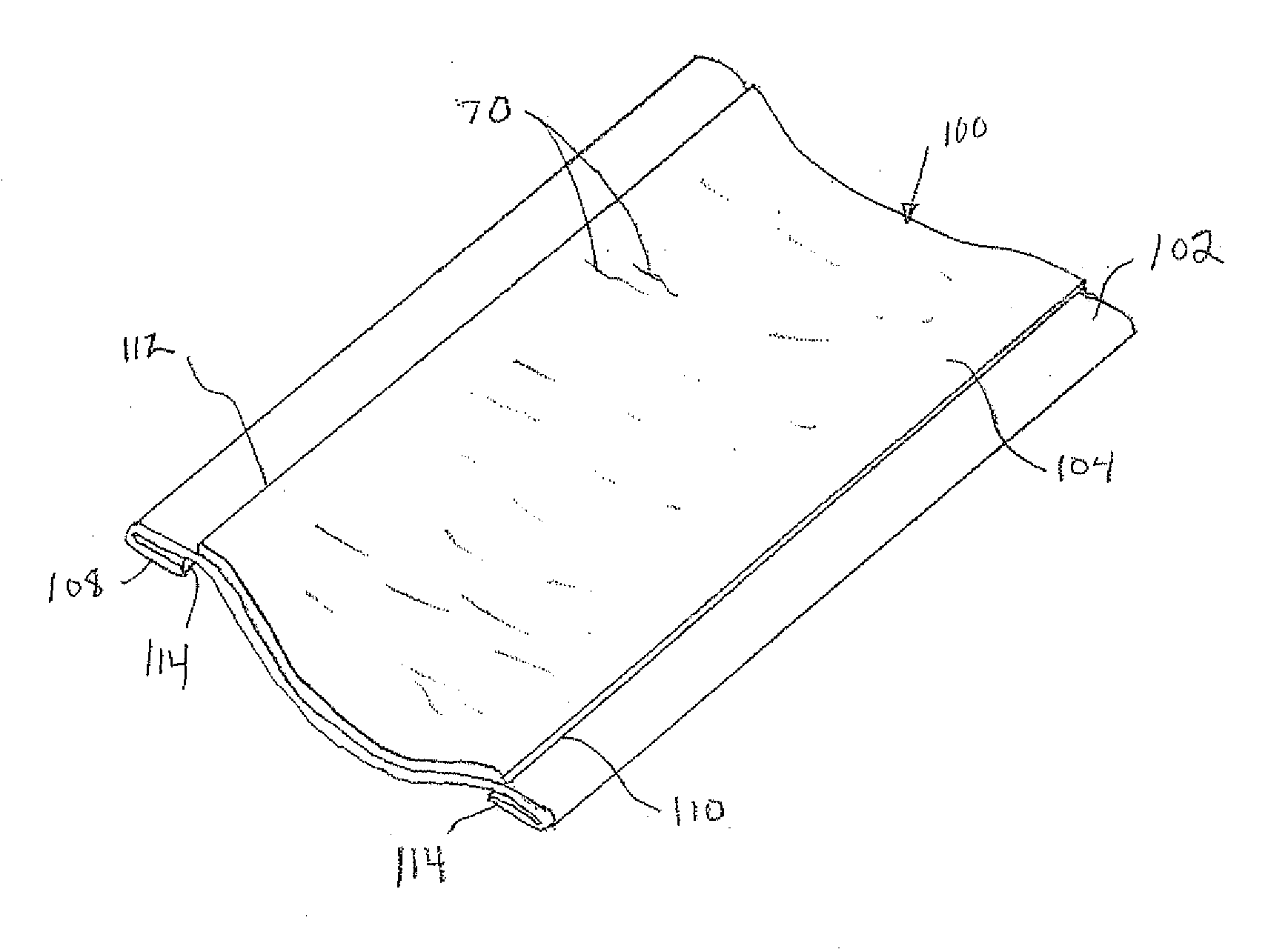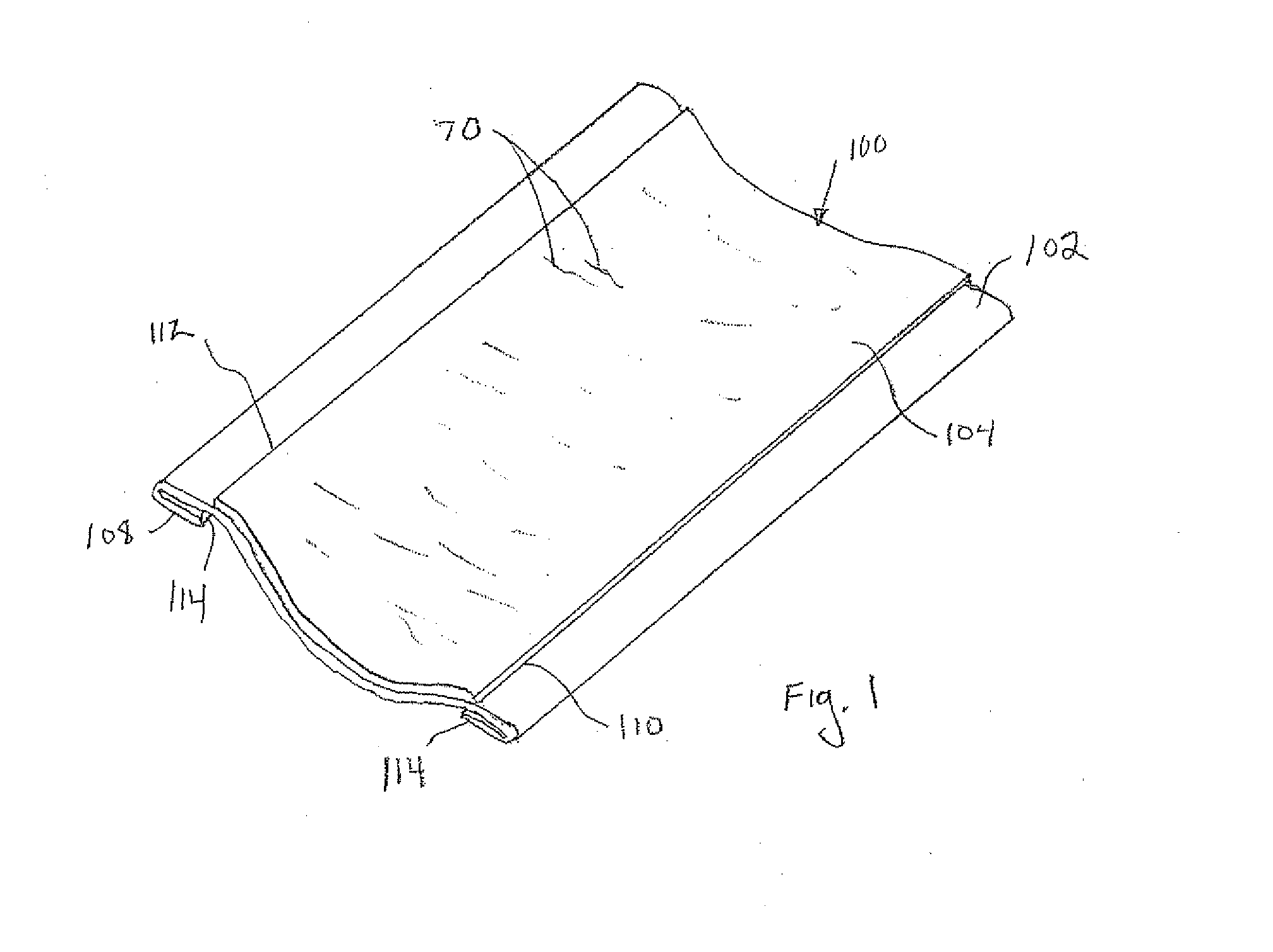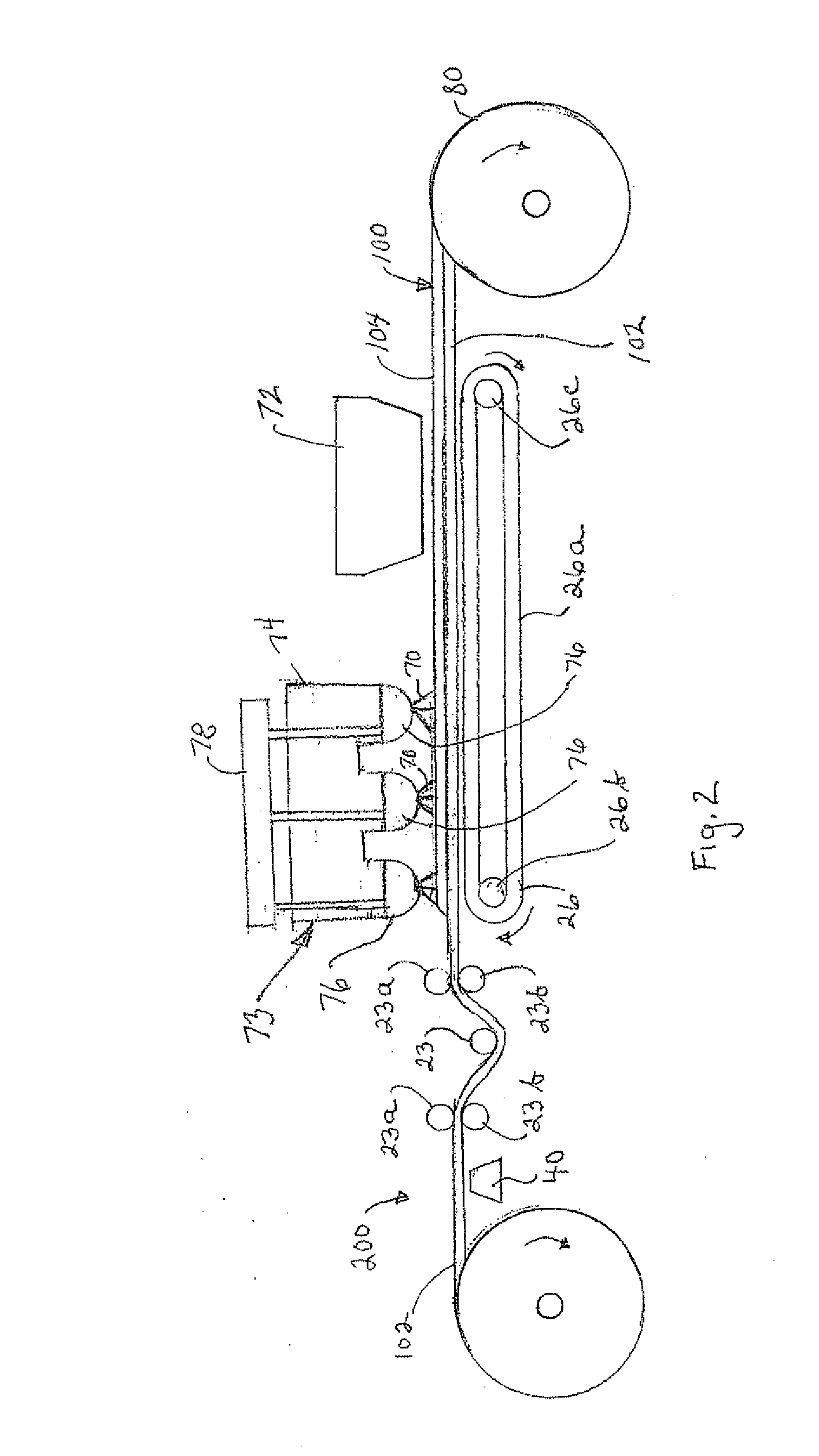Reinforced Humidity Adaptive Vapor Retarding Film and Method of Manufacture
a technology of vapor retarder and film, applied in the direction of synthetic resin layered products, transportation and packaging, coatings, etc., can solve the problems of reducing the thickness of the film, reducing the tear resistance, and increasing the cost of the material
- Summary
- Abstract
- Description
- Claims
- Application Information
AI Technical Summary
Benefits of technology
Problems solved by technology
Method used
Image
Examples
example 1
[0027]An embodiment of the present invention comprises a plurality of polyethylene fibers melt bonded to extruded thin films, and each of the films comprises nylon, EVOH or PVOH. A combination of the thin extruded film and the polyethylene fibers has a water vapor permeance of less than about 1 Perm at 25% mean RH; and about 1-60 Perms at 75% mean RH, Alternatively, a combination of the thin extruded film and the fibers has a water vapor permeance of less than about 0.5 Perm at 25% mean RH; and about 1-60 Perms at 75% mean RH. Alternatively, a combination of the thin extruded film and the fibers has a water vapor permeance of less than about 0.1 Perm at 25% mean RH; and about 1-60 Perms at 75% mean RH. Alternatively, a combination of the thin extruded film and the fibers has a water vapor permeance of less than about 0.2 Perm at 25% mean RH; and about 1-100 Perms at 75% mean RH.
example ii
[0028]An embodiment of the present invention comprises a plurality of polypropylene fibers melt bonded to extruded thin films, and each of the films comprises nylon, EVOH or PVOH. A combination of the thin extruded film and the fibers has a water vapor permeance of less than about 1 Perm at 25% mean RH; and about 1-60 Perms at 75% mean RH. Alternatively, a combination of the thin extruded film and the fibers has a water vapor permeance of less than about 0.5 Perm at 25% mean RH; and about 1-60 Perms at 75% mean RH. Alternatively, a combination of the thin extruded film and the fibers has a water vapor permeance of less than about 0.1 Perm at 25% mean RH; and about 1-60 Perms at 75% mean RH. Alternatively, a combination of the thin extruded film and the fibers has a water vapor permeance of less than about 0.2 Perm at 25% mean RH; and about 1-100 Perms at 75% mean RH.
example iii
[0029]An embodiment of the present invention comprises a plurality of ethylene vinyl acetate (EVA) fibers melt bonded to extruded thin films, and each of the thin films comprises nylon, EVOH or PVOH. A combination of the thin extruded film and the fibers has a water vapor permeance of less than about 1 Perm at 25% mean RH; and about 1-60 Perms at 75% mean RH. Alternatively, a combination of the thin extruded film and the fibers has a water vapor permeance of less than about 0.5 Perm at 25% mean RH; and about 1-60 Perms at 75% mean RH. Alternatively, a combination of the thin extruded film and the fibers has a water vapor permeance of less than about 0.1 Perm at 25% mean RH; and about 1-60 Perms at 75% mean RH, Alternatively, a combination of the thin extruded film and the fibers has a water vapor permeance of less than about 0.2 Perm at 25% mean RH; and about 1-100 Perms at 75% mean RH.
[0030]Although the above examples were obtained by melt bonding polyethylene, polypropylene or EVA...
PUM
| Property | Measurement | Unit |
|---|---|---|
| Fraction | aaaaa | aaaaa |
| Fraction | aaaaa | aaaaa |
| Relative humidity | aaaaa | aaaaa |
Abstract
Description
Claims
Application Information
 Login to View More
Login to View More - R&D
- Intellectual Property
- Life Sciences
- Materials
- Tech Scout
- Unparalleled Data Quality
- Higher Quality Content
- 60% Fewer Hallucinations
Browse by: Latest US Patents, China's latest patents, Technical Efficacy Thesaurus, Application Domain, Technology Topic, Popular Technical Reports.
© 2025 PatSnap. All rights reserved.Legal|Privacy policy|Modern Slavery Act Transparency Statement|Sitemap|About US| Contact US: help@patsnap.com



